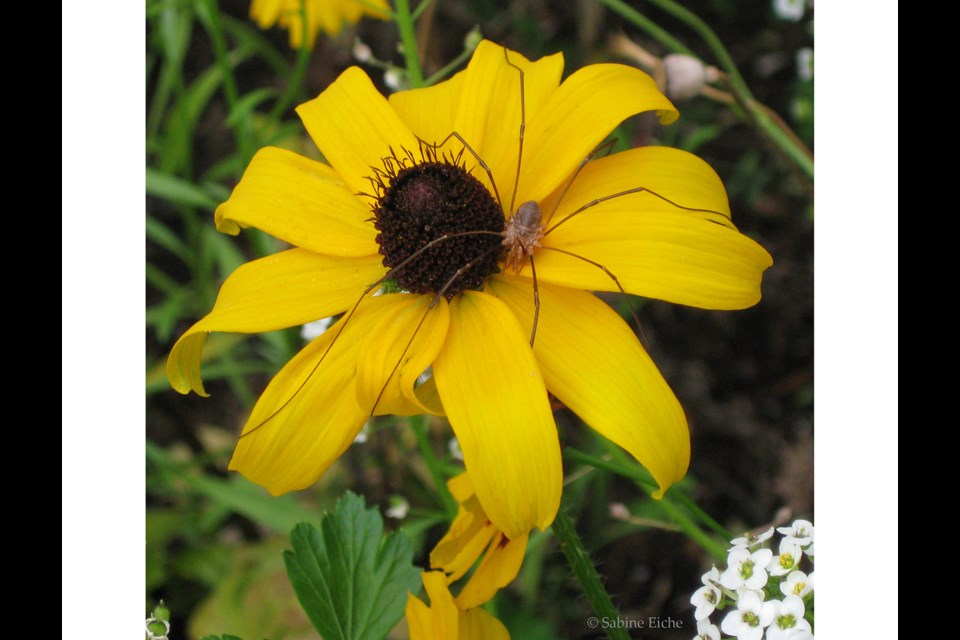In a corner lay two small objects. They were oblong in shape and pale in colour, reminding me of miniature mummies. Looking at them closely I saw that they were earwigs, wrapped in spiders’ silk. So, what I considered an undesirable intruder, the spiders considered a desirable meal. My respect for them rose meteorically. They were more than welcome to room and board with me.
Spiders are arthropods belonging to the order Araneae of the class Arachnida. Canada, I learned, is home to about 1,500 species of spiders, and at least 1,000 of them live in our west coast climate. Greg Harris, an instructor in biology at KPU who studies the spiders (and other “bugs”) frequenting the bog conservation area of the Garden City Lands, has so far found eight species of spiders. He’s also found one species belonging to the order Opiliones of the class Arachnida. Commonly called daddy longlegs, it’s not a true spider, although it resembles one.
What’s the first thing that comes to mind when someone mentions spiders? A web, right? Webs are woven with the silk spun by spiders, and the spider’s name in fact derives from this ability. In Late Old English a spider was called a “spithra,” literally a spinner (and the German word for spider is “Spinne”). The name Arachnida – the zoological class to which spiders belong – also has to do with spinning and weaving. Its source is a tale in ancient Greek mythology describing a contest between Arachne, a weaver, and Athena, goddess of war and weaving. Arachne wove the winning tapestry, enraging Athena, who destroyed Arachne’s tapestry, whereupon Arachne hanged herself. Athena, out of pity, loosened the rope, which turned into a web, and Arachne metamorphosed into a spider.
Inside the spider’s body is a liquid containing the protein fibroin. To make strands of silk the spider pulls the liquid through its spinnerets, located on the underside of its abdomen. Although there are many different kinds of spider webs, most of the ones that I see in the garden are orb webs. They’re woven in a circular pattern, and the spider positions itself at the very centre, ready to scuttle in any direction as soon as it feels the web vibrate, which is the signal that something has been caught. Orb webs can’t withstand as much wear and tear as some other types of webs – such as sheet webs or funnel webs – and often the spider has to weave a new one every day, which it can do in 30 or 40 minutes. In any case, the threads of the old web are not wasted – the spider eats them, thus recycling everything.
We shouldn’t interfere with nature, but I must confess that I have extracted several bees and even a ladybug from a web, seconds before the spider arrived to give them the “kiss of death.” And I would do it again. After all, to slightly misquote Carson the butler, “Even nature lovers must be allowed to have their favourites.”
Sabine Eiche is a writer and art historian.



